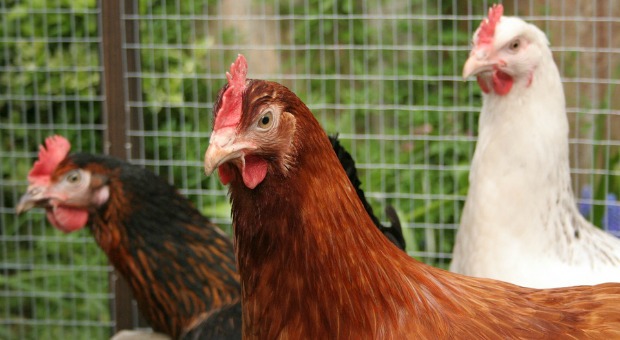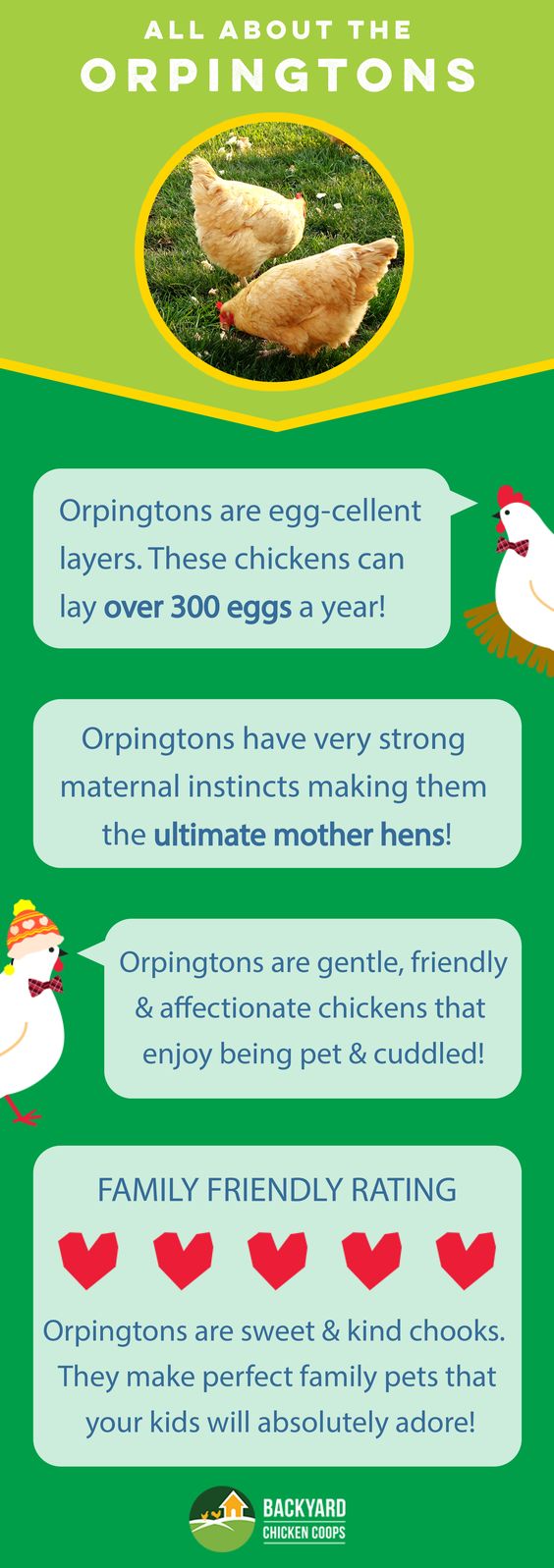You may think that a chicken is a chicken.
Well, if you actually start raising chickens, your thinking will change when you end up collecting eggs from your banty (or Bantam) chickens. They’re about half the size of a regular egg. They’re good for small roasting chickens, though.
Since we’re in the habit of using items that are multi-purpose, the same rule should apply to our farm animals. There are chickens that are perfectly good for both eating and eggs, but it depends on what you’re looking for in a chicken. Let’s talk about a few different breeds so that you’ll have a better idea of what may be a good choice for you.
Weather with chickens should be a consideration when you’re buying chickens, because they tend to be particularly sensitive to extremes of temperature, both hot and cold. Also, you need to consider how much they eat and what your budget is, how docile they are, and how adaptable they are.
There is nothing as empowering as growing and making your own food. Without further ado, let’s talk chickens!
Jersey Giants
These are, without a doubt, great for both meat and eggs. They grow to be an average of 12 pounds and produce great brown eggs while you’re waiting to eat them. Because they’re so large, they need a lot of feed, so that’s something to keep in mind. The roosters can also be aggressive, but the hens are usually calm.
They come in black, white, and blue and are relatively slow growers, taking 16-21 weeks to mature for meat purposes.
Orpingtons
These chickens grow to an average of 8 pounds or so and will lay around 200 eggs a year, so they’re a good dual-purpose chicken. They tend to get broody in the summer, though, so they a bit less than some other chickens. They’re great “pet” chickens as they have great temperaments and will easily come to eat out of your hand.
Since they’re not huge, they require an average amount of food and they’re docile. Though they’re good layers, the meat is where they really stand out. It’s some of the most tender and flavorful there is.
Orpingtons come in buff, black, blue, and white and take 18-24 weeks to mature for meat purposes.
Marans
These chickens are mostly dark grey with white flutters and are medium in size. They lay about 200 nicely sized brown eggs per year and the meat is delicious. They don’t require much space and are gentle, but not particularly sociable, so though they’re great to collect eggs from, they’re not a fan of being pets.
Sussex
These are dual-purpose chickens that lay around 250 eggs a year. The egg colors range from brown to cream and the chicken is white with black neck and tail feathers. One of the best things about Sussex hens is that they enjoy free-ranging in the garden without destroying it. They’re calm and laid back, and will eat from your hand.
The meat is also good, so they’re just a great choice all the way around, especially for new chicken owners.
Delaware
This is a heavy-bodied bird, weighing in around 8.5 pounds for the rooster and 6.5 pounds for the hen. They lay jumbo eggs, mature quickly, and are great in both cold and hot temperatures. They mature quickly for a non-broiler and have great temperaments. They’re currently on the list of endangered chickens because the Cornish Cross took its place as the country’s top best-tasting meat chicken in the 50s, so help bring this amazing breed back!
They’re white with black neck and tail feathers and look similar to the Sussex.
Dorkings
This chicken is calm and non-aggressive, so it’s great for kids and small dogs. The meat makes it a superior table fowl with large, tender breasts and wings.
They’re hardy throughout the winter, providing eggs when other breeds may not be laying. They’re good broody hens and great mothers that stay with their chicks longer than most chickens.
Leghorns
Yes, as in Foghorn Leghorn. These chickens are white or brown with a big red comb and will lay around 250-280 white eggs per year. They’re good for anybody who wants a dual-purpose chicken that lays lots of eggs, but they are shy and hard to tame. The roosters can be cranky.
Leghorns are especially hardy in hot weather and are good foragers. The hens weigh around 5 pounds each and reach maturity for meat at 16-21 weeks.
Rhode Island Reds
These are probably the chicken that you think of when you imagine chickens pecking around in the yard, or at least they are for me. However, if you’re expecting a bright, all-red chicken, you’re probably not thinking of the Rhode Island Red, because they’re reddish brown with black feathers mixed in, which gives them a bit of a darker appearance. They’re great for both meat and eggs, laying 250 brown, medium-sized eggs per year.
They’re tough chickens that are able to take care of themselves, but they’re super friendly and are great for first-time chicken people.
Hybrids
One great hybrid chicken is the Golden Comet. Hybrids are bred to lay lots of eggs, but eat very little, so they’re an economical chicken. Expect around 280 eggs per year. Though they’re tough and resilient, they’re friendly and rarely turn broody. This chicken is easy to keep, lays lots of eggs, and has decent meat, so what’s not to love?
In addition to choosing the right chickens for your survival flock or homestead, you need to provide them with the best environment, too. A chicken always lays more eggs in its first year, and older chickens will lay less, and it really decreases after the third year. Also, happy chickens lay more eggs.
They need to have the nutrients that they need, too. There are layers pellets that have all of the key nutrients and minerals that hens need.
Make sure that they have plenty of water and light (at least 14 hours), and they coop needs to be clean and well-ventilated. They also like to have a box of sand or diatomaceous earth to “bathe” in, too.
I’ve tried to choose the hens with the best temperaments, who lay the most, largest eggs, and that provide generous amounts of good-tasting meat.
Raising chickens for food and meat is one of the steps you can take today so you can once and for all put an end to this store-bought food dependency we’re all suffering from and that’s slowly poisoning us.
Click the banner below for more!
I’m sure that I’ve missed some, so please feel free to tell me about your favorite chickens in the comments section below.










Donald Smyrl | July 7, 2017
|
One category that wasn’t addressed, but is important tome is cold hardiness. We live in northern Utah and are being told we need to take this into account as first time chicken ranchers.
Ann Hupe | July 7, 2017
|
Check out mypetchicken.com. They go through both heat-tolerant and cold-tolerant chickens as well as other aspects to consider. For cold-tolerant chickens for egg-laying, go for Plymouth Barred Rocks. These are big, beautiful girls that are great moms that while other breeds are cowering in corners when coops are attacked by predators, these hens will defend the coop as well as raise a huge ruckus. They also are the sweetest lap chickens and make the most wonderful, contented noises. (I used to rent a room on a working ranch in Alaska, and they had these.) People get them for pets, not just for agricultural purposes.
Bill in Idaho | July 18, 2017
|
Hi, Ann. As you noticed from my Original comments, that is the breed (P Rocks aka Barred Rocks) that I Always Recommended First.
Laura Seim | July 7, 2017
|
I live in NE South Dakota. Winters are brutal. Our chickens stay in the barn and we only use 1 heat light bulb. They do fine and lay eggs all year. Hope this helps.
Bill in Idaho | July 10, 2017
|
Hey, Don. COLD Hardiness seems fairly consistent through most of the breeds.
Our Sleeping House (With the Roosts) is Well Insulated (From Heat And Cold) and heated with an EBB (Electr. Base Board Heater – 240VAC) and the Thermo-stat is set for 52-54 Deg F. The Nesting Area has Heat lamps for each box – I switch these on manually.
Bill in Idaho | July 7, 2017
|
Hello, Theresa. Another good article – well done. Just a couple of tips . . . Above the 45th parallel, where we are, chickens do Much better. I Always recommend Wyandotts and Rocks (Plymouth or Barred) for Both Meat And Eggs. Ours are crossed with Game Cock Roosters – 300 plus eggs per year for 5 plus years. One negative – these hens have a considerable tendency to “Set” – but can be broke from setting easily. Just a few thoughts for you. Bill
Sheila | July 7, 2017
|
I had several Rhode Island Red hens and found them very territorial with other breeds and had even killed other hens (Wyandotte and NH Red). I now have 16 New Hampshire Reds that although skittish, will let you hold them and do not have the alpha dominance syndrome that I experienced with the Rhoadies. After a year old, they lay large, brown eggs (some double and triple yolk) and are very cold adaptable to New England Winters.
Matt | July 7, 2017
|
Black australorps, hello? Hey dude from Utah; friendly, quick growing, cold hardy, and a hen from Australia holds the world record for 1 yr egg laying. 364 eggs in 365 days. A lot like black Jerseys just don’t get as large, grow quicker and (in my experience) are a bit more excitable. Other than that they’re carbon copies of black Jerseys.
We live in a higher elevation of WV, currently we have two Jerseys and 4 australorps, all pullets (hens) Jerseys are our pets (somewhat) and the australorps lay our eggs. The only other thing I can think of is Jerseys require more calcium to lay successfully (probably due to body mass) so we give them the crushed egg shells.
Kitty | July 7, 2017
|
I have raised Turkins, both standard and bantams. Have found that they do well in Central Oklahoma and Southern Mississippi.
Masimie | July 10, 2017
|
I heard of a chicken from Italy called the ROMANOLI (sp?). This chicken supposedly produces an egg with a larger egg yoke. Does anyone know anything about these chickens? Are they available in the US? Is there an alternative to this chicken with a larger yoke? Thanks for your response…
Angelo | July 12, 2017
|
I live in Alaska. I’m looking for chickens for eggs and meat, any suggestions?
Bill in Idaho | July 13, 2017
|
Hey, Angelo. You are in the same “boat” with the rest of us. (See my commentary above). ANY Chicken has to have Protection – From Both Heat AND Cold. A well designed, Well Insulated, Well Ventilated (Controllable), and Heated Shelter for sleeping and laying is Essential – Anywhere. Temperate, Clean Drinking Water and Calorie-abundant food is critical – chickens Will NOT Drink water that is Hot or is Ice water. Their “Loafing” area(s) Must Be Wind/ Draft Free – Always. They will seek shelter when they Need to – Except for my “Game” Cocks – which are inherently Stupid. Pay attention to the Details and you will do fine – whether Alaska or Idaho. Take care and Enjoy.
Pingback:Financial Plan For Raising Chickens | Farm Ena | December 4, 2019
|